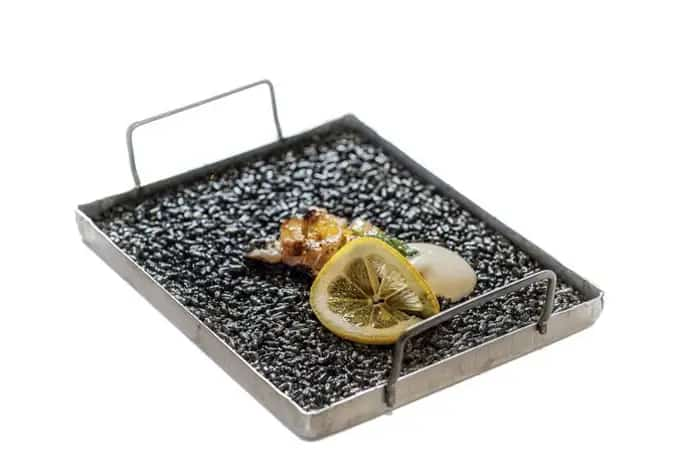How to make rice with a llauna
Nowadays, a new trend has emerged to make extra-fine rice for 1 or 2 people, and although a paella pan prepares them without equal, a way that is becoming popular to make this type of rice is through the llauna or can, which is It is gaining the colloquial name, from those who try these rice dishes, of rectangular paella.
The llauna has always been used to prepare recipes in the oven or over wood fires, with one of its most popular uses being for snail shells or “llaunes per caragols”, although now we can add the llauna for rice to its repertoire of uses.
We are going to see in this blog post how we can prepare fine rice with this kitchen utensil that leaves our diners wanting seconds.
How to make rice in llauna
Metod of double cooking
First of all, we must know that the cooking of rice in these llaunas is based on double cooking, first in a pan and then in the llauna, inside an oven:
1st Cooking - Frying Pan
In a frying pan, whether Parisian style or similar, we introduce the concentrated sauce. Next we add the rice and mix everything very well.
Then we will add the hot broth and let it boil over high heat for approximately 10 minutes.
After this time, turn off the heat and let the contents of the pan rest for 2-3 more minutes. This time should be deducted from the total cooking time of the rice, not apart.
We will transfer the rice to the lluna, keep in mind that the rice should have a slight amount of broth to accommodate the grain and finish cooking. The broth used should have a texture between honeyed and brothy.
We will place the rice as flat as possible, after that, we distribute the elements that make up the rice and any decoration that we want to add. Elements that do not require overcooking or decorative elements that can be heated can be added in the last minutes.
2nd Cooking - Oven
Have the oven preheated to 200/220°C or 190°C, if possible at 20% humidity, depending on what kind of oven you are using.
Place the llauna in the oven and finish cooking for 18-19 minutes or more. Please note that cooking times may vary depending on the variety of rice used.
Once cooking is finished, remove the llauna from the oven and let it rest for 5 minutes, meanwhile you can add any decoration if necessary. Once this resting time has passed, serve your extra-fine rice on the table to the delight of your diners.

Direct method: Everything in the llauna
If you don't want to have to do extra scrubbing after making your rice, you can also make your rice directly from the llauna. To do this, you will have to do the following:
Add the olive oil to the llauna, when the oil is hot we mark/cook the vegetables, meat or seafood that we are going to use.
With these ingredients ready, we reserve and prepare the sauce directly on the llauna, in the same way as we would do with a paella.
Now, add the rice and we will make it pearly, depending on what kind of rice you are preparing, you can now add other ingredients such as paprika, to mix it with the rice, or the meat, seafood or vegetables that you have previously reserved.
With the pearly rice and the necessary ingredients included, add the broth and let it cook for 8 minutes, remember not to stir the rice. In the meantime, you can add other ingredients that need to be finished in the broth or dressed with decorations/ingredients.
After this time, turn off the heat and move the llauna to the oven, you can preheat it beforehand to 200°C. Once inside, let it bake for 10 minutes.
Finally, let it rest for 5 minutes when it is finished. If you have followed these steps, the only thing left is to take your llauna to the table and enjoy your extra-fine rice.
Can we get socarrat with a rectangular paella pan?
Extra-fine rice is no excuse for not providing it with a socarrat to be enjoyed, but fear not, extra-fine rice from a llauna also comes with socarrat, but unlike when making it with a paella, you will find it not at the bottom of the rice. the llauna, but at the top.
This is because the chemical reaction that forms socarrat requires heat, and because of how an oven works, it receives most of it from the top, which ensures that every bite of our rice has our always appreciated socarrat.



